Friday, January 10th 2020

Ausounds Announces AU-X ANC Planar Headphones and AU-Stream Hybrid True Wireless Earbuds
Ausounds is a newcomer to the audio market as a retail product provider, but the founders have decades of experience in the music industry, and have been creating audio solutions for musicians for a while now. The company invited us to check out the brand, as well as their new products, at CES 2020 and we obliged as we usually do in an attempt to shine more light on relatively unknown companies in addition to the mainstream ones. They took the time to introduce their new AU-X active noise cancelling planar magnetic driver headphones to us, which feature 54 mm planar drivers on each earcup and four noise cancelling microphones working in a hybrid mode to allow up to 28 dB of ANC. The headphones are tuned for a transparent frequency response combined with a large soundstage and, in my limited testing, offered excellent discerning of the mid-high tones, especially when it comes to jazz and classical music.
The AU-X ANC Planar headphones have dual microphones also for calling/audio out, an included battery of 800 mAh for a rated 25 hours of battery life which the company claims is on the conservative side (think closer to 28 hours), and touch controls on the earcups for volume and media playback. Bluetooth 5.0 and 3.5 mm aux inputs complement the headphones for portability, and AptX-HD + Hi-Res certification round off the headphones which are rated for a 20 Hz-40 KHz frequency response, 32 Ω impedance, an SPL of 98 +/- 3 dB, and 280 grams in mass with protein leather earpads similar to those in the Bose QC35. The AU-X headphones cost $299.95 and will ship in March 2020. Read past the break for more on their equally new AU-Stream Hybrid earbuds.The use of four noise cancelling microphones from front and back is what Ausounds calls hybrid noise cancelling, and they have build upon their first product, the AU-Stream, with this technology in the AU-Stream Hybrid true wireless earbuds. These are part of their AU-Stream product lineup, and come in four color options of red, gold, dark grey, and black, of which the first three have a glossy finish and the black comes in matte. These feature 9.2 mm titanium drivers with the same hybrid noise cancelling as in the AU-X, a frequency response of 20 Hz-20 KHz, a 32 Ω impedance, an SPL of 100 dB, and weigh 6.5 grams for each earbud. The total battery life is a rated 24 hours (~14 with ANC), but note that this includes battery cycles courtesy the charging case, as is the case with a typical true wireless earphone set in 2020. Individual usage can range from 5-6 hours, but we aim to test this ourselves to be sure. These sounded better to yours truly with rock music than jazz, especially compared to the planar AU-X, but were still fairly impressive for the form factor. The AU-Stream Hybrid costs $189.95 and ships February 1, 2020.While not new for CES, they also had the new-to-us AU-Flex ANC wireless neckback earphones on display which were arguably the best overall offering in terms of pricing and sound signature. Featuring a hybrid driver system with planar magnetic drivers for the mid-highs and a standard dynamic subwoofer, the AU-Flex supports Sony's LDAC codec in addition to Qualcomm's AptX HD for good practice, again when it comes to a more neutral frequency response and music genres such as jazz, as with the AU-X headphones. The Au-Flex ANC does not have the hybrid ANC system as the other two, however, with "only" a 25 dB reduction in ambient noise when turned on. It features a 20 Hz-20 KHz frequency response, a 16 Ω impedance, an SPL of 99 +/-3 dB, and weighs 36 g total with a rated battery life of 22 hours (~13-14 with ANC on). The AU-Flex ANC is shipping already for $199.95.
The AU-X ANC Planar headphones have dual microphones also for calling/audio out, an included battery of 800 mAh for a rated 25 hours of battery life which the company claims is on the conservative side (think closer to 28 hours), and touch controls on the earcups for volume and media playback. Bluetooth 5.0 and 3.5 mm aux inputs complement the headphones for portability, and AptX-HD + Hi-Res certification round off the headphones which are rated for a 20 Hz-40 KHz frequency response, 32 Ω impedance, an SPL of 98 +/- 3 dB, and 280 grams in mass with protein leather earpads similar to those in the Bose QC35. The AU-X headphones cost $299.95 and will ship in March 2020. Read past the break for more on their equally new AU-Stream Hybrid earbuds.The use of four noise cancelling microphones from front and back is what Ausounds calls hybrid noise cancelling, and they have build upon their first product, the AU-Stream, with this technology in the AU-Stream Hybrid true wireless earbuds. These are part of their AU-Stream product lineup, and come in four color options of red, gold, dark grey, and black, of which the first three have a glossy finish and the black comes in matte. These feature 9.2 mm titanium drivers with the same hybrid noise cancelling as in the AU-X, a frequency response of 20 Hz-20 KHz, a 32 Ω impedance, an SPL of 100 dB, and weigh 6.5 grams for each earbud. The total battery life is a rated 24 hours (~14 with ANC), but note that this includes battery cycles courtesy the charging case, as is the case with a typical true wireless earphone set in 2020. Individual usage can range from 5-6 hours, but we aim to test this ourselves to be sure. These sounded better to yours truly with rock music than jazz, especially compared to the planar AU-X, but were still fairly impressive for the form factor. The AU-Stream Hybrid costs $189.95 and ships February 1, 2020.While not new for CES, they also had the new-to-us AU-Flex ANC wireless neckback earphones on display which were arguably the best overall offering in terms of pricing and sound signature. Featuring a hybrid driver system with planar magnetic drivers for the mid-highs and a standard dynamic subwoofer, the AU-Flex supports Sony's LDAC codec in addition to Qualcomm's AptX HD for good practice, again when it comes to a more neutral frequency response and music genres such as jazz, as with the AU-X headphones. The Au-Flex ANC does not have the hybrid ANC system as the other two, however, with "only" a 25 dB reduction in ambient noise when turned on. It features a 20 Hz-20 KHz frequency response, a 16 Ω impedance, an SPL of 99 +/-3 dB, and weighs 36 g total with a rated battery life of 22 hours (~13-14 with ANC on). The AU-Flex ANC is shipping already for $199.95.



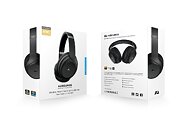
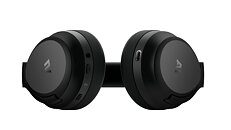


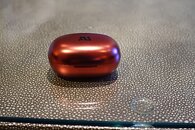



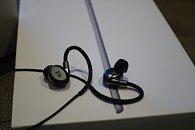

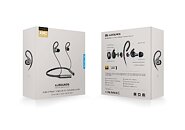

6 Comments on Ausounds Announces AU-X ANC Planar Headphones and AU-Stream Hybrid True Wireless Earbuds
Any period of extended use - or even a couple of months into an average ownership life - these cups will start to deteriorate.
Maybe habit while eating and oil/fat on hands? It breaks down the coating on most headphones?
Also, the Bose headset you linked does not appear to be using the same cup design - only the material used is "the same" in the sense that its synthetic leather - and even then, I doubt the compound of said synthetic is the same for Ausound as it is for Bose, or even the OEM.
Tyre compounds come to mind; just because they look the same, does not mean they are.Aside from the oil/fats naturally present on your hands, most people that own higher-end headphones seemingly wont be eating popcorn and chips - among other things - then handle their headphones... neither is it the case with this particular photo linked in my first post.
The cups are cracking already and for a tech show demo product, thats simply not a good sign to potential customers or people in the tech industry youre looking to impress.
All these synthetics are oil coated carcinogenic solutions, no matter how you twist it, any prolonged use and those chemicals will start seeping out. Different kinds of PU may deteriorate in different rates, but there is no getting around it. Over time they will all fall apart.
Also note that any typical skin is coated in fat and oily substance. If its not, you get itchy. The real question here is why we're not getting real textiles here. There are dozens of great materials to use, and yes, it costs more than some crappy plastic, but you may want to wonder how a small piece of cloth can be sold as 'more premium' than a complicated synthetic solution instead...
The simple fact is that plastic can be had for cheap because we produce endless amounts of it. Its the core of our environmental problem and a byproduct of fossil fuels.
Just quite simply STOP accepting PU anywhere near your skin and this trend will change fast. We don't need this. We're in luck though because these headphones are grossly overpriced anyway. PU and touching 200 dollars?! What the actual F?